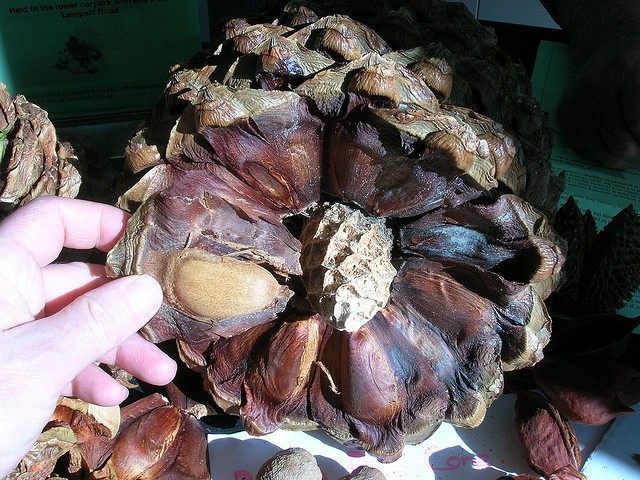Holy Cross Church in Santa Cruz is taking precautions after noticing a Navy veteran filed a $5 million suit against the U.S. government, the National Park Service, the Department of the Interior, and San Francisco Maritime National Historical Park after a heavy cone from a bunya pine tree fell, striking him on the head.
The church is trimming the bunya pine tree on its grounds, encircling the tree with red “DO NOT ENTER” tape as well as erecting warning signs on the bark of the tree about the cones, which can weigh up to 40 pounds.
Erika Yanez, Director of Media Relations for the Diocese of Monterey, told KSBW, “At this point, they haven’t caused any damage or harm to anybody, but we are taking precautions.”
Consulting arborist Bob Hoffman warned, “At full maturity, they can weigh up to 10 kilos and they’re lethal if they fall and do some very serious damage.”
The cones don’t represent the only problem with the trees; as Hoffman pointed out. He explained, “The foliage is also very, very sharp. It can cut you up so when you deal with these trees you have to wear protective gear.”
For some reason, the drought has catalyzed more growth in the Bunya tree near the church; Yanez said, “In the past, it’s always been yearly, but now it’s every few months. So, I believe they come out in June or July.”
Santa Cruz is home to five bunya pine trees, all on private property; they are listed as Heritage tree and thus immune from being chopped down.
Sean Mace, the veteran injured in October 2014 by a 16-pound (7-kg) Bunya Pine cone as he rested in San Francisco Maritime National Historic Park, later underwent two rounds of brain surgery.
According to the Australian Native Plants Society:
The bunya pine is widely cultivated in many areas and, despite its sub-tropical/tropical origins, is hardy in colder districts of Australia. Reports indicate bunya pines growing and fruiting in cold climates such as Bright in the Victorian Alps (where plantings about 100 years old exist) and at Mt. Martha, some 60 km south of Melbourne on the Mornington Peninsula.

COMMENTS
Please let us know if you're having issues with commenting.